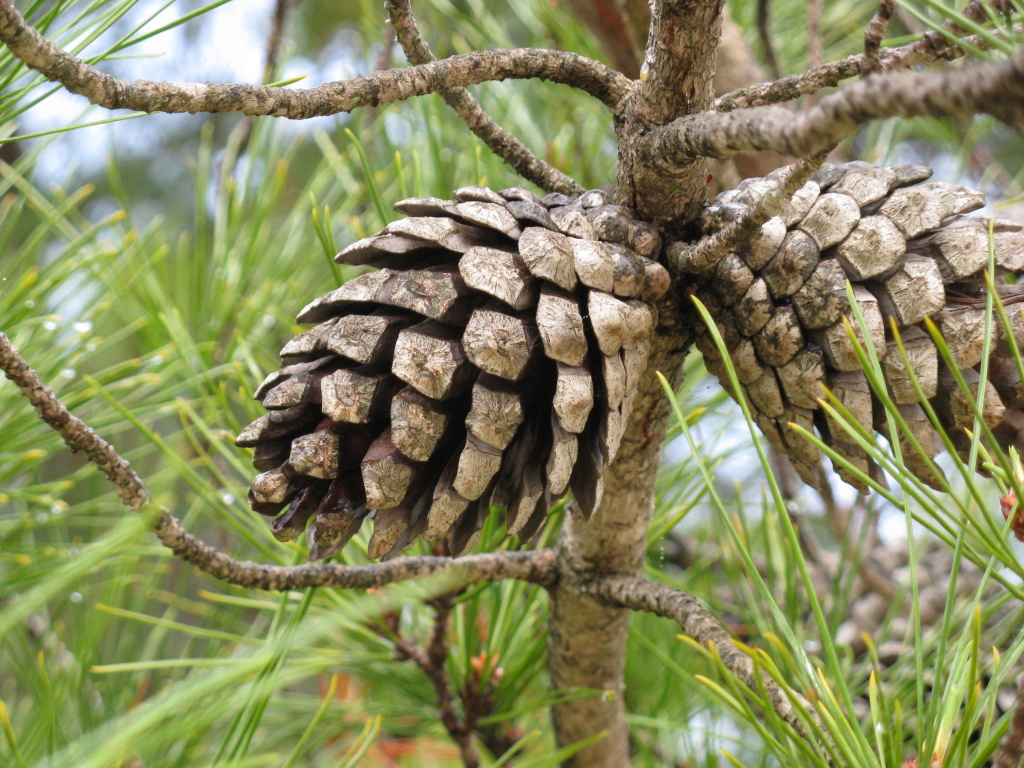Pinus radiata
D.Don Insignis PineTree up to 30 m tall or more. Bark dark brown and divided into deep ridges on old trees. Winter buds 12–18 mm long, resinous; scales deciduous, closely appressed. Leaves in groups of three, 8–15 cm long, slender, grass-green. Female cones solitary or in clusters, shortly stalked, pendulous, greyish-brown, asymmetrically ovoid, 7.5–15 cm long, usually persisent; exposed portion of scale rounded with small dorsal point. Seed with a well-developed wing.
LoM, MuM, Wim, GleP, Brid, VVP, VRiv, MuF, GipP, OtP, WaP, Gold, CVU, GGr, DunT, NIS, EGL, HSF, HNF, OtR, Strz, MonT, VAlp. Also naturalised in WA, SA, Qld, NSW, ACT, Tas. Native to California, USA. Widely planted for softwood timber and as an ornamental tree. Wind-blown seed has allowed Pinus radiata to spread into the native forests flanking softwood plantations throughout the State.
A variety of this species, Pinus radiata var. binata Engelm. has leaves in pairs rather than in threes. A few Victorian trees have leaves in both pairs and threes.
Entwisle, T.J. (1994). Conifers (Pinophyta). In: Walsh, N.G.; Entwisle, T.J., Flora of Victoria Vol. 2, Ferns and Allied Plants, Conifers and Monocotyledons, pp. 113–121. Inkata Press, Melbourne.
 Spinning
Spinning




